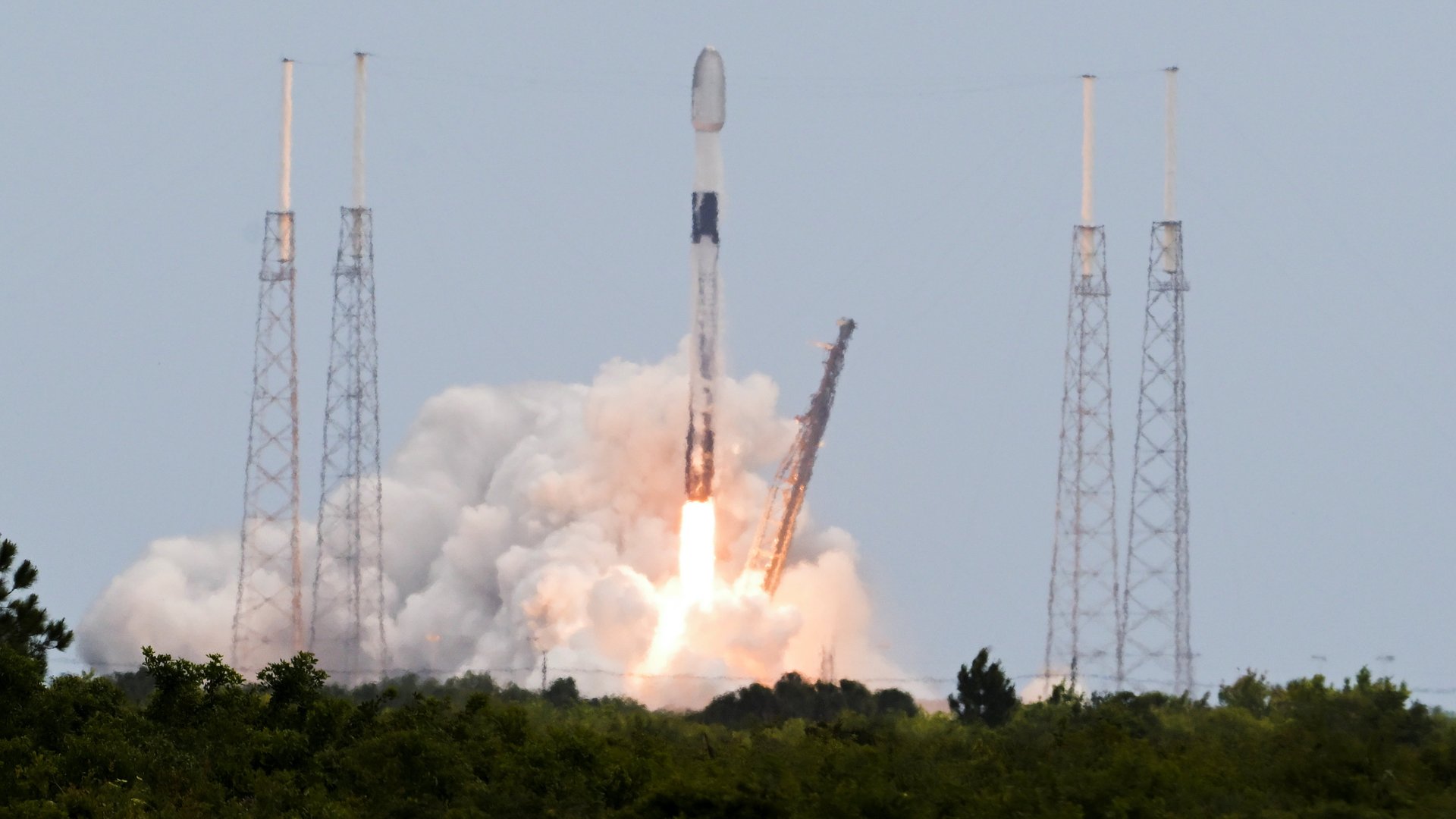The US says SpaceX can launch 7,500 more satellites
Elon Musk's Starlink constellation is approved to more than triple in size

The largest satellite network in history is getting bigger: US regulators approved a request from Elon Musk’s SpaceX to add 7,500 next-generation satellites to the company’s Starlink constellation.
Suggested Reading
Starlink currently consists of more than 3,200 operational satellites orbiting hundreds of miles above the planet, providing broadband internet service to hundreds of thousands of customers on the ground in dozens of countries. In the US, a user terminal costs $599 and monthly service charges are $110.
Related Content
Notably, the Ukrainian military has come to depend on Starlink for communications as it defends its country from Russian invasion, even as Musk has complained about the cost of that effort.
The Federal Communications Commission, which oversees satellites launched from or by US organizations, had been weighing SpaceX’s request to launch 30,000 larger, more capable version of its Starlink satellites since 2020.
The FCC struck a middle ground with Starlink’s critics
The full request proved controversial for a number of reasons. NASA and others fretted about traffic management and space debris as more satellites arrive in orbit (currently, there are more than 5,000 operational spacecraft circling the Earth). Astronomers complained that Starlink disrupts the observations of terrestrial and space telescopes alike. Rival satellite operators, including Amazon and OneWeb, worried that Starlink’s architecture will lead to interference with existing or planned communications networks.
In response to the concerns, regulators ultimately approved only 7,500 satellites, alongside a variety of reporting requirements—about satellite failures, collision warnings, and efforts to darken the satellites so they don’t bother scientists—which are intended to keep pressure on SpaceX to play nicely with other space stakeholders.
Notably, however, the FCC declined to require an evaluation of the environmental impact of Starlink’s satellites.
ViaSat, another satellite operator, has asked the FCC to consider how the unprecedented deployment of spacecraft could pollute the atmosphere or effect climate change. But the regulatory body (and US courts) have consistently ruled they don’t need to evaluate those issues, although the US Government Accountability Office notably urged the FCC in early November to reconsider this stance.
What does Gen2 mean for SpaceX?
SpaceX has until 2028 to deploy at least half of the newly approved spacecraft, or it could lose its license to operate them. This may prove challenging: Musk has said the company’s Starship rocket will be needed to deploy these satellites at scale, since they weigh more than a metric ton, about four to five times the roughly 260 kg mass of current Starlink satellites. The Starship, which could launch perhaps 100 Gen2 satellites at once, still has not gone to orbit, while SpaceX’s workhorse Falcon 9 rocket can only carry around 20.
Deploying the new satellites is key to Starlink’s future as a business. The network is not yet cash flow positive, according to executives, but its capacity is already being strained in key markets.
Earlier this year, the FCC said that SpaceX would not receive more than $800 million in subsidies to promote rural internet access because the agency wasn’t confident the satellites could deliver the promised service. The Gen2 spacecraft, because of their increased capabilities, might give SpaceX a shot at reapplying for that pot of cash.